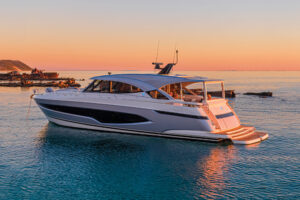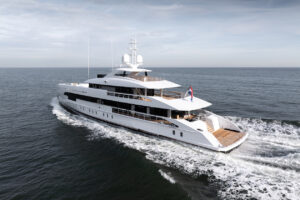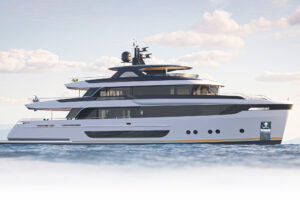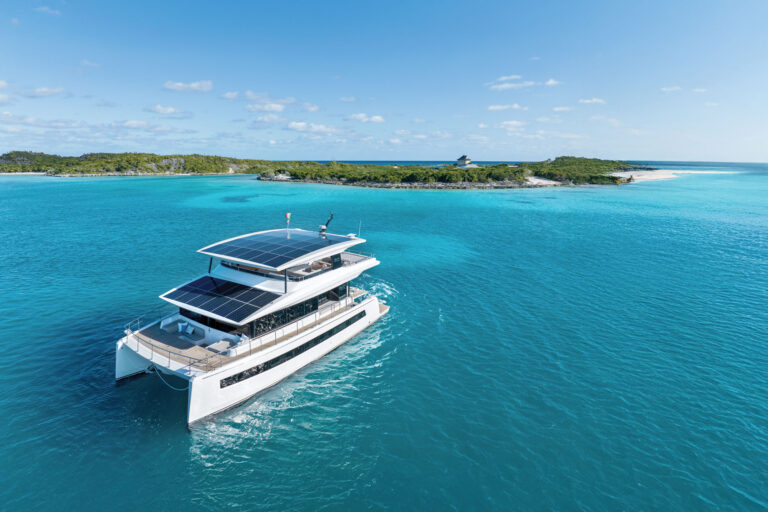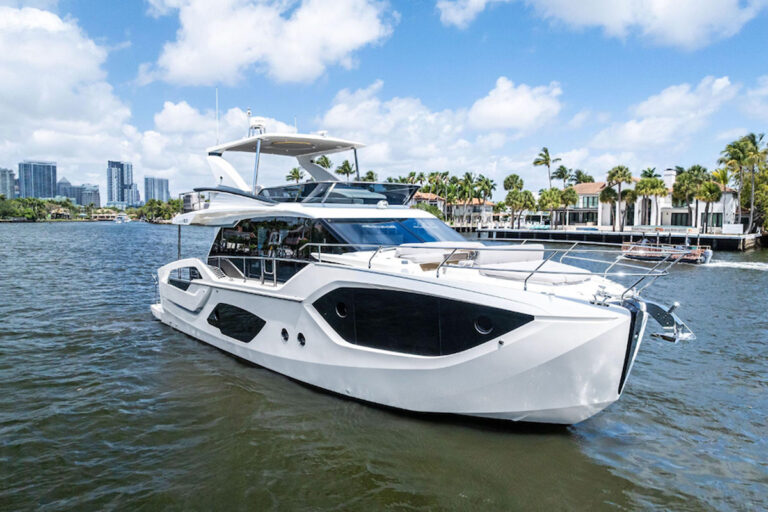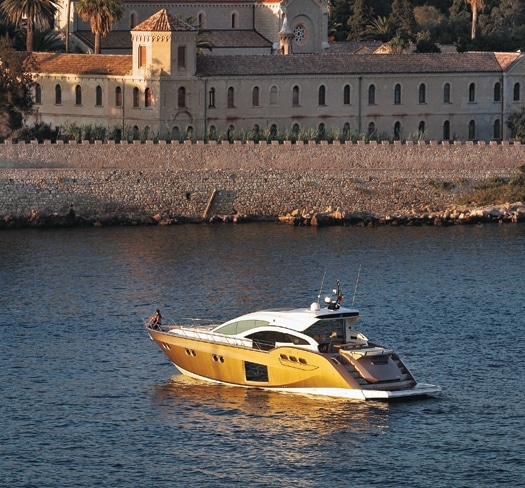
ytgmar10sessa.jpg
Psst. Psst. I’ll let you in on a little secret-there’s change brewing in the boatbuilding industry. That’s right, you heard it here first. It’s reserved and understated, but if you poke and prod long enough it will undoubtedly reveal itself. I’m not talking about to a new propulsion system or high-tech radar that can find a fly on a clamshell. Nope, the change I’m referring to is one of many substantive shifts sorted out during the economic woes of the past several years.
In short, no longer are the big holding companies and private equity enterprises the primary driving force in the boatbuilding market. The fact that financial companies and corporate raiders flocked to the industry like a herd of 49ers in search of a quick buck is amusing to anyone who has spent time working for a boatbuilder. When I did so in the ’90s, I discovered that boatbuilding is not a financial endeavor so much as an undertaking fueled by passionate individuals who get excited when talking about new designs, innovations, and boating. You can make a decent living, take care of your workers, and have fun in the process. But a large return on a capital investment is the exception, not the norm.
Today, the enduring boatbuilder won’t be found in a walnutlined boardroom, stuffed into a leather high-back chair, flanked by oil paintings of foreboding scions. The true boatbuilder will most likely be found hovering over plans of a new model or walking the factory floor interacting with the workers, collecting sawdust on his trousers as he makes the rounds. These are the builders who had their ears to the ground during the downturn, and took more immediate control of their businesses.
Riccardo Radice, president of Sessa Marine America, and son of Sessa President Raffaella Braga, illustrates this movement precisely. Over dinner in Miami a year ago, the Italian boatbuilder had a twinkle in his eye as he explained his vision of the new Sessa 68, and the family’s overall philosophy. It was obvious to me that Sessa was very deliberate in their actions and wanted to produce a boat that reflected Sessa’s sense of style and commitment to quality.
Fast forward one year, and I’m in the south of France and able to see the company’s vision, interpreted by designer Christian Grande. “You see, you see here,” said Riccardo, pointing to the 68’s shapely transom. “We used some of the classic-car designs as an inspiration.” Behold, the vents and grills could be from a late 1930s Packard. Even the afterdeck sunpad could be mistaken for a trundle seat reserved for a lovestruck couple.
Studying her profile before the sea trial, it was clear to me that the 68 was spawned by vision and passion first, was mulled over, and then worked its way to the computer screen and a finetuned design. It is understandably difficult to develop a new boat that looks, well, new. Sessa and Grande, however, succeed in accomplishing this in a profile and overall design that is fresh, yet reflects nautical pedigree. The hull flows aft from the deep-V to extended hull sides, creating the contours that might be found around the fender well of a classic car. This design element also increases interior volume.
When it came to engine selection, Sessa went for raw power and specified a pair of 1,360-horsepower MAN V12 diesels on our test boat, coupled to Twin Disc V-drives. (Standard power is a pair of 1,100-horspower MAN V10 diesels.) When I first drove the 68, she was still in the prototype stage, yet we achieved a top speed of 38 knots. (This speed, in my opinion, is plenty fast for a cruising boat such as the 68. In reality, unless you’re sprinting to lunch in Catalina or Bimini in dead-calm seas, a high 20-knot cruise speed is where most of us will find comfort.) At about 2000 rpm, we easily achieved and maintained a cruising speed of 30 knots. She’s relatively quiet at these speeds, with a sound reading of 78 decibels, and 82 decibels at top speed.
We accelerated past the 25-knot mark in less than 20 seconds with no tabs applied. Following the trend of many builders, an overhead sunroof can be opened to bring in light and air. While driving the 68, I almost forgot that I was pushing a 75,000-pluspound yacht through the water. It’s a fun boat to drive, so the helmsman may wind up ignoring the autopilot to reserve the thrill of driving for himself.
Sessa skillfully weaves in contemporary design with “traditional” details so you’ll remember you’re still on a boat. For example, on the afterdeck, natural teak is used for the deck, cockpit table, and lockers, juxtaposed against the polished stainless steel of the doubling sliding doors to the main saloon. The bow area of the 68 puts the typical forward sunpad lounge area of most similarly sized boats to shame. Two seats are perfectly molded to embrace the contours of your body and provide a secure place to relax while enjoying the sights that whisk by at cruising speed. At anchor, a bimini top raises above the sunpad for additional privacy and shelter from the afternoon sun.
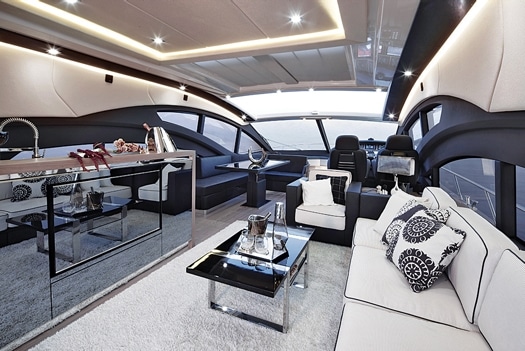
| | |
Looking aft from this area, I was struck by the huge, unobstructed windshield. You really see the benefit while seated at one of the two helm seats. Even while making some crazy maneuvers, short S-turns, and turning the 68 hard over during the sea trials, I was able to maintain an unobstructed, 360-degree line of sight at all times. The after side windows are extended down to the sole on both sides. This really opens up the saloon-it’s tough to top the visual impact of sitting on the starboard settee while taking in all the activity outside. A bar extends along the port side, concealing a flatscreen television, and can easily service guests on the aft deck, lounging around the table with service for eight. For more formal meals there is an L-shaped settee to port, opposite the helm.
The galley below with aluminum-faced cabinets is fully equipped for the gourmet. “How do you like this?” asked Riccardo, pointing to a striking glass wall displaying wine that divides the space between the galley and passageway.
Thanks to the space savings afforded by the V-drives, the master stateroom begins amidships and spans the entire beam. So lying in bed, you’re able to look side to side. Our test boat placed double sinks on the starboard side, bordering the large windows. “Ah, some people might not like this,” offered Riccardo holding back a slightly devious smile, referring to the exposed sinks and open shower. “But we could do something else.” Guests will be comfortable in the two forward, en suite staterooms. Following European trends, compact crew accommodations are tucked between the engineroom and master stateroom.
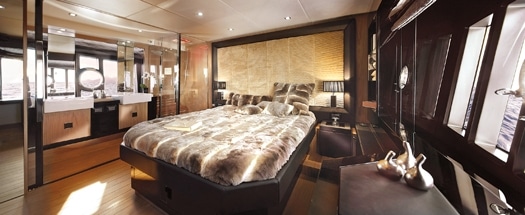
| | |
Sessa Marine was started in 1958 by Riccardo’s grandfather, and remains a family endeavor today. It currently builds 22 different models ranging from the 20-foot Open to its flagship, the 68. Unlike some overseas builders, Sessa is still committed to servicing and selling in the U.S market, reflected by its newly opened Dania Beach, Florida, corporate sales and service office.
The company’s chance of success in the competitive U.S. market will certainly be improved by producing models like the 68 that offer a fine platform for ambitious cruising schedules and a refreshing change from the status quo.
Sessa Marine America, Inc., (954) 925-1955; **www.sessamarine.com**

